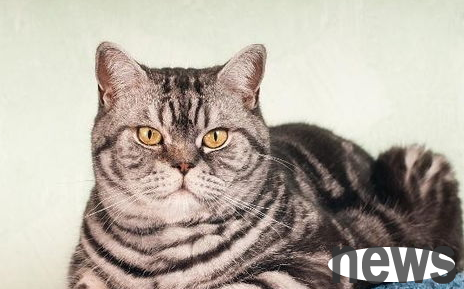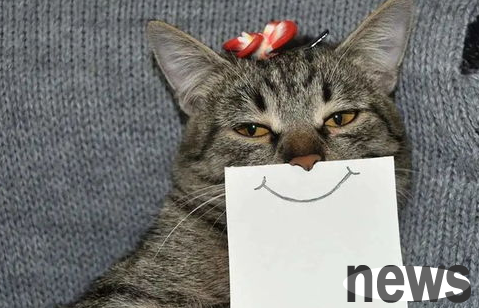Treatment of jaundice hepatitis in cats, principles for treatment of cats hepatitis! Jaundice is a characteristic symptom. Cat jaundice is also called cat hyperbilirubinemia. The main symptoms are: yellowing of the skin, yellowing of the conjunctiva of the eye, yellowing of the oral mucosa, etc. Generally speaking, cats will experience jaundice symptoms when they develop liver disease. Hepatitis refers to the liver pathological state characterized by the infiltration of inflammatory cells, etc. that occurs due to some reason due to damage (degeneration, necrosis). From the morphological point of view, it can be divided into diffuse, focal and bile duct.

The cause of cat jaundice is that the serum is too high bilirubin; bilirubin is released from indirect bilirubin by rupture of senescent red blood cells. Indirect bilirubin synthesizes direct bilirubin in the liver, and directly secretes bilirubin into the intestinal duct through the bile duct. Part of bilirubin reenters the liver through the portal circulation, and the other part is excreted from the body through the feces, and the remaining part is excreted through the kidneys through the systemic circulation and into the urine. When abnormal liver metabolism and exocrine abnormalities occur, it can cause excessive bilirubin, which we call primary hepatic jaundice. Primary hepatic jaundice is the most common type of jaundice in cats. These primary liver diseases include: acute toxic hepatitis, cholangiovascular hepatitis, cirrhosis, and fatty liver in cats; other diseases that can cause liver damage include: diabetes, infectious peritonitis in cats, tumors, and feline leukemia virus infection.
1. Causes of jaundice hepatitis in cats
1. Toxicity: Chemicals such as carbon tetrachloride, arsenic and phosphorus, drugs such as aspirin and paracetamol, insecticides such as thallium TL, plants such as castor seeds and mushrooms, and foods contaminated by Aspergillus aflatoxin can all induce hepatitis. In addition, metabolic deficiency and malnutrition (methionine, choline) may also induce hepatitis.
2. Infectiousness: Hepatitis is caused by infection with FIP virus, pseudotuberculosis, Tyzeli, various suppurative bacteria and fungi.
3. Parasitic: caused by toxoplasma, flukes or roundworms invading the liver.
2. Symptoms
1. It shows symptoms such as depression, loss of appetite or loss of appetite, vomiting, diarrhea and weight loss.
2. It shows fever, anemia, jaundice and liver tenderness.
3. When liver cell damage is severe, symptoms of severe liver insufficiency appear, namely, appetite loss, vomiting, jaundice, abdominal pain and bleeding tendencies. In addition, they show neurological symptoms such as perceptual allergies or blunt numbness, sleepiness or lethargy, abnormal gait or inability to stand, and spasm.
3. Treatment
1. Oral administration of American Denosyl cats for liver disease and hepatitis. 1 capsule twice a day for the first 5 days, and then change to 1 capsule per day and take it on an empty stomach. This medicine can help cats repair damaged liver cells, eliminate ascites, restore normalization of gallbladder function, reduce jaundice, and promote cats to take the initiative to eat. Generally, after 5 days, the cat will improve significantly and can take the initiative to eat and recover. After taking one box in a row, the cat will basically recover.

2. Feed to high-quality foods that can maintain nutritional balance and are rich in energy and vitamins. As a source of protein, it is best to add skim low-energy cream, while as carbohydrates, you can feed foods such as rice. Vitamins require vitamin B and vitamins A, D, E, and K. The required energy is 80~100kcal/kg/day. For animals without appetite, it is necessary to force feed them. In order to minimize vomiting and diarrhea, feed 5 to 10 ml/kg of porridge 6 to 8 times a day. For sick cats with neurological symptoms, it is best to feed foods containing 4g/kg/day protein, 6g/kg/day carbohydrates and 4.4g/kg daily fat. For sick cats who have been treated with long-term food, their weight should be measured regularly to check whether the nutritional nutrition they feed every day should be appropriate.
Hills L/D cats canned prescriptions, at least half a day. The owner can dilute the L/D canned food with water, pour it with a syringe, and eat less and eat more meals. When the cat regains appetite and can eat dry food, it can feed Hills L/D dry food. If the owner cannot buy L/D for a while, A/D can be used instead.
3. Infusion: According to the condition, the electrolyte solution containing sugar is taken orally or injected with sugar (50-60ml/kg/day). At the same time, it is best to use B vitamins and vitamin K as auxiliary. Since the blood sugar level of this disease changes, the amount of sugar supplement should be determined before infusion.
4. In order to promote the efficacy of bile, dehydrocholic acid is taken orally (3 times a day, 10-15 mg/kg each time). To reduce plasma ammonia, oral administration of lactulose, arginine or glutamine.